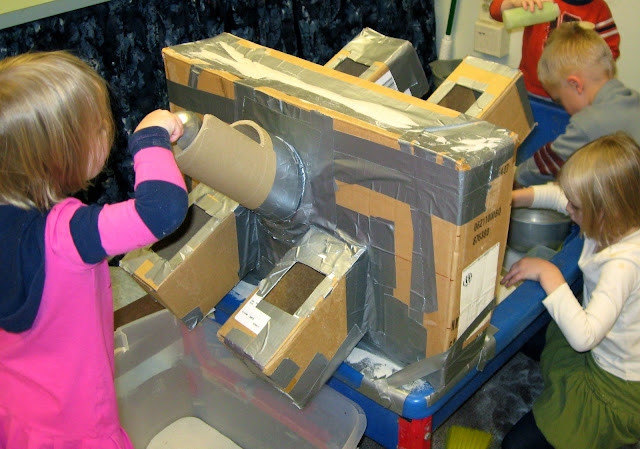Experimentation, discovery, and play take different forms, though, with the closed design. That is because there are more defined spaces. With the open chute, it is more like one continuum, whereas the closed chutes have several intersecting planes that crisply demarcate spaces. Look at the apparatus below.
First, there is top of the chute.
And then there is the bottom of the chute.
Both spaces are well defined because the support box divides the chute into a top and bottom. What is interesting is that the child catching at the bottom does not see when the person on the top is pouring so he has to rely on his aural sense to know when something is coming down the chute. Of course, a child could hedge her bets by covering both chutes. That way, whichever chute the other child decides to pour into, she has it covered.
There is also the tube in this particular apparatus which has two different levels: the top which is over the tub and the bottom which reaches into the table.
There is another space that offers children another level on which to operate. That is the top of the divider box. It is a place to find stray pellets to sweep with your hand or....
a place to stack all the pellets you can collect in whatever container you can find.
For some children this apparatus provides an opportunity to simply pour into holes.For others, it offers opportunities to observe what happens as one works with the different materials and objects provided with the apparatus.
This child decided to put a funnel in the hole on the top of one of the chutes. He pours sand, which is quite fine, into the funnel and then looks down the tube to see the result.
This is the children's table to experiment as they see fit. Observing the children has taught me to expect the unexpected and appreciate their inventiveness.












No comments:
Post a Comment